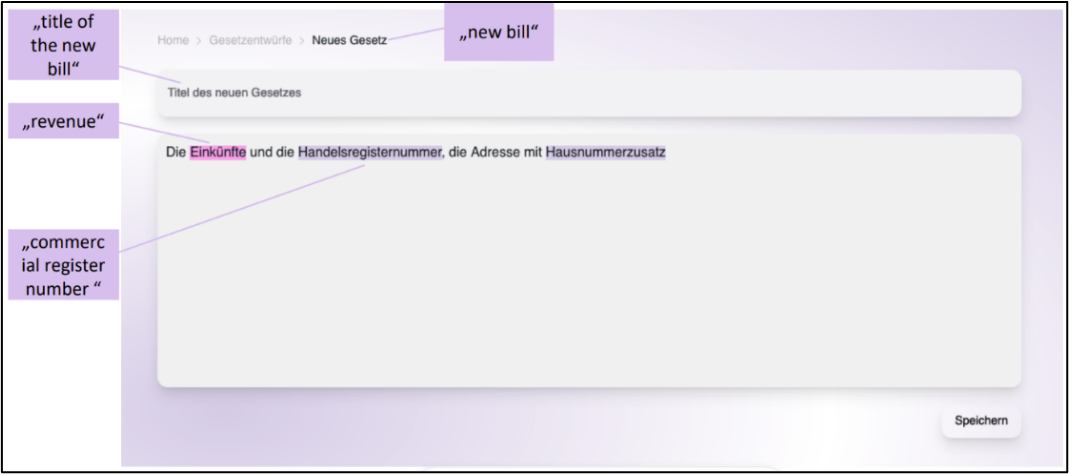From legal terms to data models: A framework for reliable cross-border data reuse
In the digital transformation of public administrations, one of the most pressing goals is to reduce the burden on citizens and businesses by reusing data that authorities have already collected. Achieving this goal requires a shared understanding of the legal concepts that support public sector data, as well as alignment between legislation and digital implementation.
A recent report by the German Federal Ministry of Finance and the Free Hanseatic City of Bremen presents a structured framework for doing just that. It explores how interoperable legal terms (i.e. legal concepts that are consistently defined and modularised) can serve as the foundation for reliable, cross-border data reuse in the European public sector. The "Interoperable Legal Terms for Data Matching" project is transforming how public administrations handle data.
The challenge of data fragmentation
Most public sector data originate in law. Legal terms such as "income", "residence", or "child" determine what information must be collected, stored, and exchanged. However, these terms are often defined differently across policy areas, making it difficult to reuse data effectively or to automate administrative processes. This generates a common problem: Data fragmentation. This inconsistency adds complexity for citizens and businesses, potentially leading to redundant data collection processes and increased administrative costs, while also making it hard to have a single point of truth in data.
Building blocks of interoperability
Addressing these challenges requires a standardised semantic framework. By utilising AI-driven knowledge graphs and modularising legal terms, the project harmonises legislation with data, ensuring consistent interpretations of terms across different administrative contexts. This common framework fundamentally reduces redundancy and errors in data sharing. The report proposes a structured approach:
- Modularise legal terms into smaller, standardised components.
- Link each module to specific data fields used in registers, forms, and administrative systems.
- Assign each data field a persistent identifier and a clearly defined "data home" (the authority responsible for its maintenance).
This methodology enables the development of interoperable data models, which are essential for automation, cross-border reuse, and proactive service delivery.
Introducing eLexa: An AI-based assistant for digital-ready legislation
One of the roadblocks to seamless data exchange lies at the source, with the way laws are written. When legal terms are ambiguous or inconsistent, they may introduce friction into digital systems. Therefore, achieving semantic interoperability begins with creating legislation that is clear, modular, and aligned with data reuse. Germany’s innovative solution involves eLexa, an assistant designed for legislative drafters, enabling truly data-ready legislation. eLexa recognises legal terms and suggests definitions from a modular, AI-built glossary, providing drafters with access to definitions, legal foundations, and links to relevant data fields. This ensures coherent data structures right from the start. Specifically, eLexa enables drafters to:
- Reuse existing legal definitions instead of introducing new, potentially inconsistent ones.
- Align legal concepts directly with structured data models.
- Minimise ambiguity and improve machine readability of laws.
By embedding interoperability into the drafting process, eLexa helps ensure that semantic consistency and data reuse are considered from the outset. This tool facilitates the digital implementation of legislation and its integration with real-world administrative processes.

Transformative outcomes
The project aligns with the goals of the Interoperable Europe Act, which emphasises seamless cross-border data exchanges. Achievements include integrating persistent identifiers for data fields and creating transparent, reusable legislative processes. By promoting transparency and reducing redundancy, the project enhances government systems, making them more robust and adaptable.
A vision for the future
Looking ahead, the project aims for laws to be digital-ready, enabling seamless data exchange between public services and improving efficiency. Tools like eLexa demonstrate how interoperability can close gaps between legal and data frameworks, reducing burdens on citizens and businesses. By leveraging technology, Europe continues to pave the way in transforming bureaucracy and enhancing administrative efficiency. This vision is already being piloted in contexts like parental allowance applications, where the reuse of data from tax and civil registries can simplify the process and reduce errors.
For more information, you can consult the full report in German. The English version will be published later this year. For additional context, you are welcome to access the homepages of the Federal Ministry of Finance and the Free Hanseatic City of Bremen.
Written by the SEMIC Team and validated by Kathleen Jennrich, representative of the project of the Federal Ministry of Finance.

